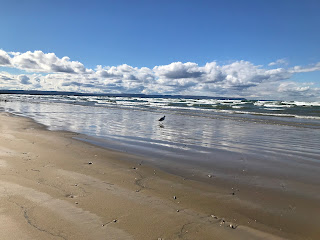Lilac "Ludwig Spaeth" was absolutely spectacular in the garden this year with its abundant flowers and outstanding fragrance.
 |
| Lilac "Ludwig Spaeth" |
Given full sun, lilacs bloom reliably every spring for about three weeks. The flowers usually appear in mid-May and fade by early June. These hardy shrubs symbolize many things. Their flowers are often interpreted as symbolic of new beginnings and of renewal thanks to their early bloom time. Lilacs also symbolize love and romance. They are the flower given to couples on eighth wedding anniversaries.
Lilacs also have a connection to death. Purple is the colour of mourning in many countries. During the Victorian era, widows wore lilacs as a sign of remembrance.
The lilac in my backyard is named for Franz Ludwig Späth (1793-1883), a German botanist. As I thought about this man and all things associated with lilacs during the fleeting moments when they are in bloom, a love story started to take shape. The resulting poem is written as a ballade.*
Ludwig: A Love Story
Ludwig sends me lilacs every month of May
remembering like the earth remembers the seasons
Lilacs that he planted to mark the vows of our wedding day
persuading me I would one day be grateful for his reasons
Spring’s sweet scent, he dreamed, to our windows would breeze in
Fragrant remembrances of moments we had only begun to accrue
Life together was fresh, new, and easy, and so I teased him
Thank you for the flowers Ludwig, but I would much rather have you
Ludwig loved the lilacs, stealing away for brief moments at a time
to bring a clustering branch close and breathe its essence with wonder
Perfumes of magenta-violet were his muse sublime
and beckoned to him each morning and before each night’s slumber
With careful cuts he filled his arms, the bouquets too numerous to number
Panicles of purple, pink, white, and hints of blue
I quipped as I placed the stems in vases one after the other
Thank you for the flowers Ludwig, but I would much rather have you
The lilacs without Ludwig are lilacs incomplete
He saw them one last time before the end that came to claim him
Through the pane a symbol of love that made our hearts beat
I planted those for you, he said, as the light in his eyes dimmed
I whispered that I understood as the tears in my eyes brimmed
That night I filled the vases to overflowing, weeping for years too few
Crying out at memories sown and carried on lilac-scented winds
Thank you for the flowers Ludwig, but I would much rather have you
Ludwig sends me lilacs every month of May
A reminder of a love that blossomed long ago and grew
For scented sprigs of reminiscence, I am grateful every day
Thank you for the flowers Ludwig, but I would much rather have you
 |
The deep, rich purple blooms of
Lilac "Ludwig Spaeth" are in flower
for only a few short weeks |
Happy Gardening!
*A ballade is a type of Old French verse. The structure of the poem is usualy made up of three eight-line stanzas and a four-line envoy. An envoy is a short stanza that comes at the end of a poem. It serves as a summary of the poem or is used as a dedication to a person. A ballade follows and ababbcbc bcbc rhyme scheme. I'm not certain that I've achieved all the necessary elements of a ballade ; I have probably deviated from the proper form somewhat, but I'm pretty happy with this poem.













